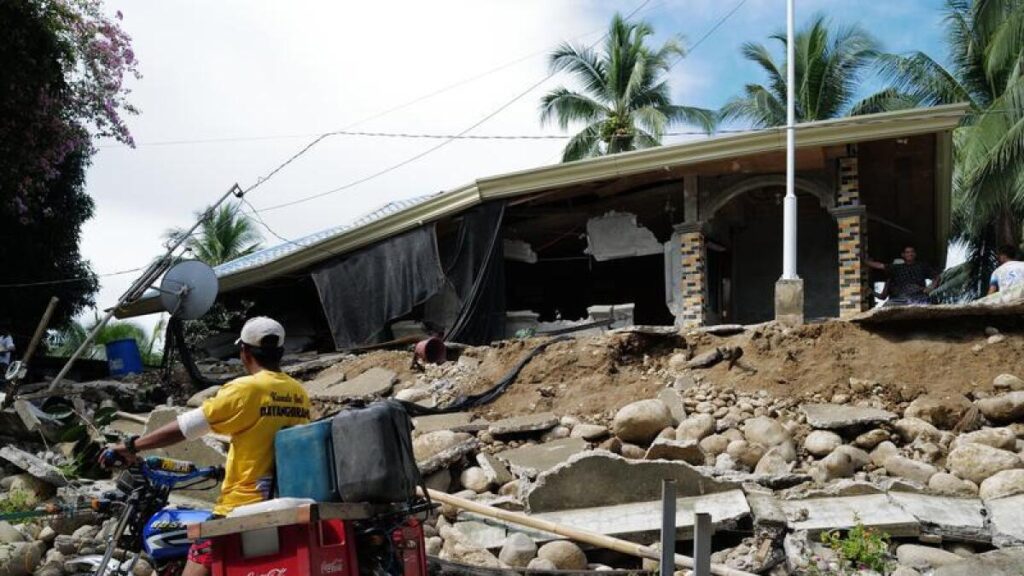
A series of powerful earthquakes struck off the coast of the Philippines, resulting in the deaths of at least seven people and prompting local tsunami warnings. The first quake, measuring 6.8 in magnitude, occurred on Friday, followed by a second quake of similar strength later that day. Both quakes were triggered by movement along the same fault line, the Philippine Trench, according to Teresito Bacolcol, chief of the Philippine Institute of Seismology and Volcanology.
“This second quake is classified as a doublet quake,” Bacolcol explained to The Associated Press. “While both quakes occurred in the same vicinity, they have different strengths and epicentres.” Authorities have expressed concern that the second quake could further compromise buildings already weakened by the initial tremor.
President Ferdinand Marcos Jr. is currently assessing the damage, as the country faces yet another natural disaster following a recent deadly quake and severe storms. He announced that rescue teams and relief operations were being prepared to respond when conditions are safe.
The first quake was centred approximately 43 kilometres east of Manay town. Casualties included two patients who died from heart attacks in a hospital, and a resident in Mati City who was killed by falling debris, according to Ednar Dayanghirang, regional director of the government’s Office of Civil Defense. In addition, three villagers lost their lives due to a landslide triggered by the initial quake in a remote gold-mining area in Pantukan, located in Davao de Oro province.
Reports indicate that several buildings sustained damage, including cracks in the walls of an international airport in Davao City, although operations continued without any flight cancellations. “I was driving my car when I felt the ground sway, and I saw power lines swaying violently,” said Jun Saavedra, a disaster-mitigation officer. “This was the strongest earthquake we’ve experienced.”
As the ground shook, panic ensued, with people rushing out of their homes and buildings. The intense shaking also resulted in injuries to approximately 50 students at a local high school, who were transported to a hospital for treatment of bruises, fainting, and dizziness.
The Pacific Tsunami Warning Centre in Honolulu reported that small waves were observed along the coasts of the Philippines and Indonesia shortly after the first quake. A tsunami warning led to evacuations in six coastal provinces near Davao Oriental, though the warning was lifted within two hours as no significant waves were detected.
This recent seismic activity occurs as the Philippines continues to recover from an earthquake that struck on September 30, 2023, with a magnitude of 6.9. That disaster resulted in at least 74 fatalities and displaced thousands in the central province of Cebu, particularly affecting Bogo City and surrounding areas. The country is also frequently battered by around 20 typhoons and storms each year, complicating disaster response efforts for both the government and volunteer organizations.
As rescue operations are mobilized, the focus remains on assessing the full extent of the damage and ensuring the safety of affected communities.






